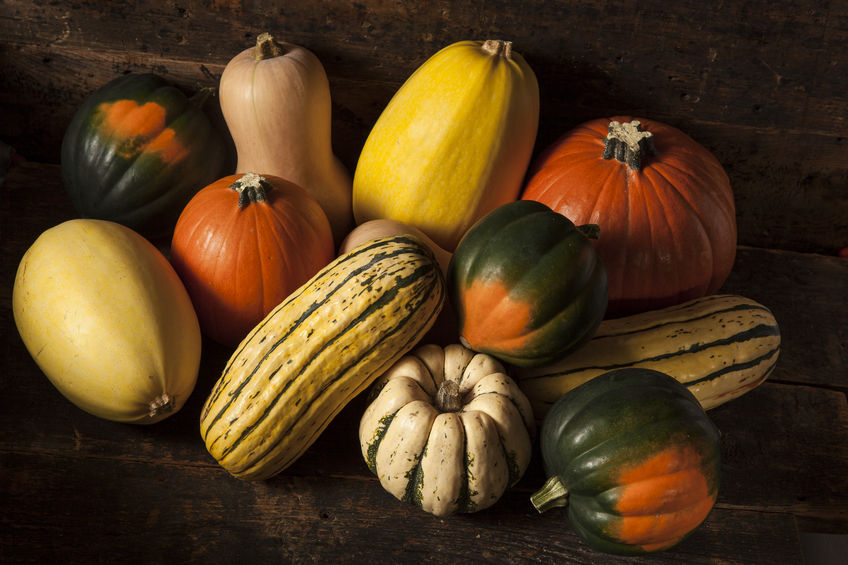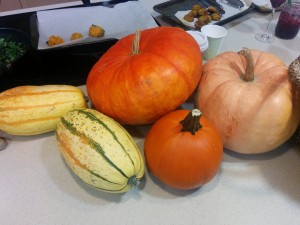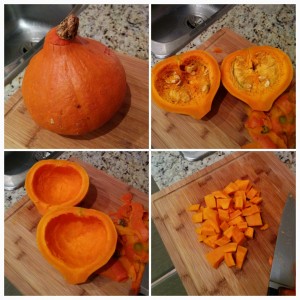We are into October where the leaves are changing colour and Thanksgiving celebrations are all around. Which also means it’s winter squash season (e.g. pumpkin, butternut, buttercup, acorn, hubbard)!
I have a love/hate relationship with winter squash in general. I love their bright colour, smooth texture and sweet taste but found them intimidating to cook due to their awkward shape and tough skin. The largest knife I own is an 8” chef knife so trying to slice through an acorn or butternut squash was an accident just waiting to happen (this is where a butcher’s cleaver would come in really handy).
That is, until I learned a handy trick on how to cut through winter squash – microwave it first! Poke the skin with a fork several times and put it in the microwave for 30 to 60 seconds until you start to see beads of moisture seep out from where you poked it.
Here is a useful video that illustrates that method.
It should now be easier to cut through (or peel). To cut it in half, start from the side that is furthest away from the stem and use the weight of the knife to tap through the squash until you cut through to the other side.
Once the squash is cut in half, scoop out the seeds and place it cut side down on a baking sheet. Roast at 350 degrees for 45 to 60 minutes or until soft. After it’s roasted it becomes soft enough so that you should be able to scoop it out with a spoon.
This article illustrates this method for making pumpkin puree for pumpkin pie.
If you really want an even easier method you can just put the entire squash in the oven and roast it whole – just be careful as it has a tendency to roll around. Or you can microwave it for longer until it’s completely soft.
Once you have scooped out the squash, you can use it in soups, muffins, pies and casseroles. It will keep for 3 to 5 days in the fridge or 10 to 12 months in the freezer. One squash can go a long way and be used in several recipes – it’s extremely versatile. I was able to make a big pot of soup, pumpkin loaf and muffins.
Not bad for a single squash that I bought for $3. Plus pumpkin (and most winter squash) is an excellent source of vitamin A and vitamin C while being low in saturated fat and sodium.
To learn more about the types of winter squash and suggestions on how to cook them check out this article.
What kinds of squash do you like to cook with? Do you have any tips you can share?


